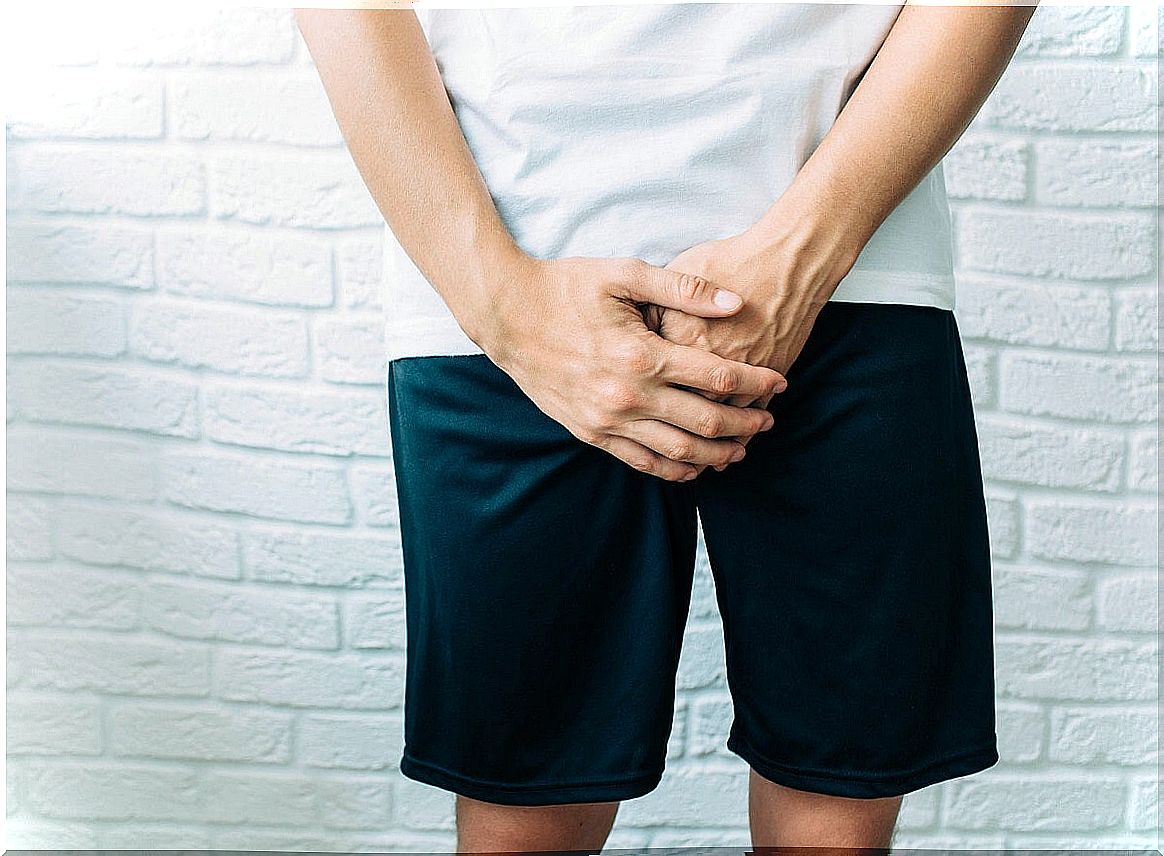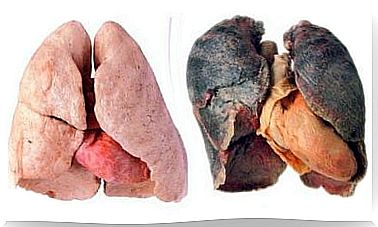Overflow Incontinence: What Is It And How Can It Be Treated?
Overflow incontinence usually has its origin in an underlying disease. What does it consist of? What are your treatments? This time we give you the most relevant details of this symptom.

Urinary incontinence is a very common problem that greatly affects older adults. It can be defined as the involuntary and uncontrollable release of urine. One of the most common types is overflow incontinence. What is it and how can it be treated?
Generally speaking, the release of urine is controlled by a muscle called the bladder sphincter. It can lose its functionality due to multiple causes, leading to incontinence. Studies have determined that this symptom occurs in up to 50% of the population over 65 years of age.
Overflow incontinence occurs when complete emptying of the bladder does not occur. Consequently, this organ handles a greater volume of fluid when it is filled again and, therefore, small urine leaks occur.
What Causes Overflow Incontinence?
One of the main causes of this type of incontinence is chronic urinary retention, which can be caused by an obstruction in the exit of urine. As it is a chronic problem, its symptoms last for a long time, which ends up affecting the functionality of the sphincter.
Men are more likely to suffer from it due to benign prostatic hyperplasia. The prostate is an organ that surrounds the male urethra, so it can prevent urine from coming out when it is enlarged. With this, the problem in question is generated.
Some neurological conditions can also explain the presence of this symptom. Diseases such as multiple sclerosis tend to affect the muscle that surrounds the bladder, preventing its complete emptying.
Other related conditions are the following:
- Bladder stones or lumps.
- Pelvic surgery
- Prostate cancer.
- Some obstruction in the lower urinary tract.
- Bladder or uterine prolapse.
- Side effect of some drugs.

Other types of incontinence
Overflow incontinence is one of the most common types of presentation. However, there are also other ways in which this health problem can appear. The end consequence will be very similar in most cases, although the specific cause may vary.
Stress incontinence
This type of incontinence is more common in young women and usually occurs when the bladder is subjected to excessive pressure. For example, by activities that increase intra-abdominal pressure, be it laughing, coughing or sneezing.
Women who have had several children are at higher risk of suffering from it. This is because pregnancy increases the pressure exerted on the bladder, which affects the long-term functionality of the sphincter and pelvic muscles.
Urge incontinence
Urge incontinence is characterized by the inability to control the flow of urine when you have an excessive urge to urinate. One of the most frequent causes is neurological damage that affected the innervation of the bladder sphincter.
It is a common condition in people with diabetes, Parkinson’s disease, and Alzheimer’s disease. It should not be confused with incontinence in children, which appears as a result of the lack of maturation of the nervous system.
Functional incontinence
Functional incontinence appears in older adults, even if they have normal bladder control. It occurs because these people are unable to reach the bathroom in time, as they do not move quickly.
The characteristics of this type of incontinence are related to those patients who have joint diseases such as rheumatoid arthritis or osteoarthritis.
How is it diagnosed?
The diagnosis of overflow incontinence and the other types of presentation is based on both the history of the physician and the physical examination. During the interrogation, the specialist will inquire about urinary habits, that is, everything related to the act of urination and incontinence itself.
Among the most frequently asked questions, the following stand out:
- The amount of urine produced.
- The number of times you go to the bathroom.
- How many times a day does incontinence occur.
- The amount of urine passed.
In some cases, the doctor may indicate the realization of a diary, where the mentioned characteristics will be noted over a period of time.
The physical examination performed will try to verify the existence of incontinence. It will also seek to determine its form of presentation. In this sense, the doctor will look for signs of neurological damage and will subject the bladder to certain pressures in order to cause incontinence.
When to visit a doctor?
Urinary incontinence is a source of shame for those who suffer from it. Because of this, many choose not to go to the doctor. However, specialists such as gynecologists and urologists are trained to treat this symptomatology. The most advisable thing is to go to the beginning of the problem and thus obtain a timely treatment.
On the other hand, it should not be ignored that urine leaks can be the product of other more severe disorders. Therefore, it is essential to see a doctor if the following symptoms also occur:
- Fecal incontinence
- Weakness or numbness
- Difficulty speaking, walking, or moving.
- Sight loss.
- Loss of consciousness
Treatments available for incontinence
One of the best options for treating incontinence is to improve the underlying pathology. In this sense, prostatic hyperplasia, neurological pathology should be treated or whatever is obstructing the urinary tract should be eliminated. The problem presented should improve just by taking these measurements.
On the other hand, studies show that the use of drugs that control the vesiculourethral muscles help to improve symptoms. It is also possible to perform Kegel exercises in order to strengthen the pelvic muscles and increase bladder control.
Surgical treatment is always an option in cases of overflow incontinence. Men may be candidates for a transurethral prostate resection, which will seek to remove a portion of the gland in order to decrease its size.
In addition, surgeries can be performed to remove obstructions of another nature, such as tumors or kidney stones. Changes towards a more active and healthy lifestyle help to improve basic pathologies and, therefore, bladder control.

Advice and care at home
- People with overflow incontinence can perform certain techniques from the comfort of their home to improve their condition. A good idea is to find a comfortable position where you get the feeling of complete emptying.
- On the other hand, it is possible to perform bladder training in order to improve control. To do this, it is necessary to wait a reasonable time to go to the bathroom when you feel like urinating. The ideal is to start with a short period, which will gradually increase up to a maximum of 10 minutes.
- Urinating more frequently will help prevent the bladder from filling up and causing urine leakage. In this sense, you should try to urinate at least every 2 or 4 hours. If the problem is very severe, the doctor may order the placement of a catheter at home in order to empty the bladder constantly.
A problem that can be improved
Urinary incontinence is one of the most embarrassing problems that some older adults have. However, the impact of it can be reduced with proper medical care. People can receive medical treatment and perform a variety of exercises to improve bladder control.
Visiting the specialist early is one of the best tips to follow. This form of presentation is caused by an underlying pathology that requires adequate medical treatment.









